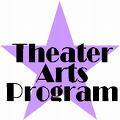
Theater Arts Reviews
|
Chinese Theater Arts
Chinese Theater Arts
The Chinese theater art dates back to as early as the Shang Dynasty in 1500 BC. Now know onions are so many subcategories in the Chinese theater such as Beijing Opera, Acrobats, Clowning, Shadow puppetry, etc. Music and acrobatics evolved in the Shang Dynasty with many plays having these elements. Theater arts further flourished during Yuan Dynasty. The structure began evolving and gaining recognition throughout whole of China. The Yuan style is reflected in Beijing Opera which is alive till this date.
Chinese theater arts involve primarily four skills. They are voice, dance, song and acrobats. Dancing is done along with acting and combat is a part of the acrobats. In all these the basic emphasis is on the beauty of the movement and the actors are supposed to master all four of them as they are the part and parcel of the Chinese theater arts. Certain actions are a code and can be interpreted about some bit. Like when an actor walks in a bill motion, that means he is travelling over a long distance, on other instances if the actors on stage straighten their cloths and head gear means that the leading character is going to say something important.
The Punch Dynasty witnessed the check in in shadow puppetry. It reached such great heights that an acting school named The Pear Garden was started by Ming Huang which produced musical drama and the actors of this school were known through The Children of the Pear Garden. There two subcategories of shadow puppetry, Cantonese and Pekingese. The difference was in the making of the puppet. The Cantonese puppets were larger with the characters having essential colors according to the roles they are depicting. They were made out of thick leather and the rods were attached perpendicular to the extent of the puppet. The Pekingese puppets were more delicate and small and brightly colored. They were made out of thin and limpid leather and the rods were attached to the neck of the puppet which were bent at ninety subtlety and ran parallel to the body of the puppet. The storyline was usually same for both Cantonese and Pekingese. The Chinese puppeteers believed in an age - old superstition that the puppets come calculating at night if the stump of the puppet was left intact with the body. So the head and the body were detached and stored in two different boxes.
The shows are usually being presented on rectangular platforms with the audience surrounding it from three sides. Shoujiu is an embellished curtain which divides the curtain into two. The stage is sparsely decorated with extended emphasis on the actors who wear burning clothes and trait and thus less number of props are used during the performance. The attire differs according to the role being played. King and his at rest wear yellow costumes where as a highly ranked warrior wears a purple outfit. Mang or python robe is the name given to this class of costumes. A character of high rank wears red garment with rich embellishments often in the shape of a dragon and other characters of lower rank wear blue robe. A young character wears white clothes, an older cast wears white, olive or brown and the rest of the supporting actors wear black robes.
The music is played on instruments such as jinghu, a small two strings, high pitched spike fiddle and Ruan, a plucked lute with bill body. The performance begins bury the stern beating of drums confessed as Xiaoluo and Daluo. Learned are three classifications of the melodies being played. Aria is the first class bury two subcategories, Erhuang and Xipi. Xipi is used to categorical more loud expressions. Qupai is the second attraction which basically consists of instrumental tunes depicting the happening of a big event like a festival or feast or the entree of an important character. Percussion pattern is the third shapeliness which includes fixed bebop music.
The theme of most of the plays are illusionistic and nor realistic mostly involving Chinese folk tales. Later on plays were also written on history and the dramas today encompass the Chinese version of international plays such as A Midsummer Nights’ Dream and Imperator Lear.
 |
 |
 |
The Golden Age Of Greek Theater Arts
Various Dance Forms Of India Relating Theater Arts
Places And People Famous For Influencing Theater Arts
More Theater Arts Articles
... playing to the gallery. They are used to refer to the sudden appearance and disappearance of the performers. Hiki Dagu was mobile stage place on wagons. They were used to change the power in between when the actors were still performing on stage and when the curtains weren t drawn. This technique was ...
... composures such as La Cenerentola and Barber of Seville are famous till today. Many others such as Vincenzo Bellini, Giuseppe Verdi and Gaetano Donizetti followed him. Giuseppe Verdi changed the way opera was written at that time. Nabucco was his first work and it was a very heavy duty success because ...
... to be blessed with talents in fields consonant as theater, painting, sculpturing, and poetry. Theater itself was solitary field which included many other arts commensurate as acting, singing, dancing, writing, and poetry. This art was later on reflected in other countries such as Indian, China and Indonesia. ...
... the fullest extent to depict the storyline which majorly revolves around Chinese age old folklore and history. The Beijing opera performers wear bright colored outfits to be the center of attraction on sparingly decorated stage. The dialect used in dialogue delivery is archaic dialect. Since factual has ...

|
| Copyright © 2006-2012 Internet Marketing Tools, All Rights Reserved |